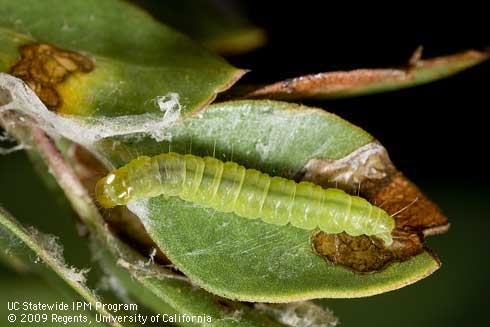
Light brown apple moth is currently under a California Department of Food and Agriculture quarantine that regulates the interstate shipment of plants to keep the moth from spreading to new areas. It has been quarantined in various counties throughout coastal California ranging from Mendocino to San Diego.
An exotic and invasive pest from Australia, light brown apple moth has a host range of more than 2,000 plants. It is a pest to a wide range of ornamental and agricultural crops, including caneberries, strawberries, citrus, stone fruit, apples, and grapes. The caterpillars eat leaves and buds, leading to weak or disfigured plants. They also can feed directly on fruit, causing the fruit to be unmarketable.
Correct field identification of the light brown apple moth is the first step in containing the spread of this moth. Unfortunately several other leafroller caterpillars, including the orange tortrix, omnivorous leafroller, avocado leafroller, and apple pandemic moth, look similar to light brown apple moth caterpillars. This makes photo identification tools that can go into the field with workers, like the Field Identification Guide for Light Brown Apple Moth in California Nurseries, a useful resource for nursery workers.
The field guide was created by Steven Tjosvold, Neal Murray, University of California Cooperative Extension; Marc Epstein, Obediah Sage, California Department of Food and Agriculture; and Todd Gilligan, Colorado State University with the UC Statewide Integrated Pest Management Program (UC IPM).
For more information on light brown apple moth and other leafrollers found in nurseries, see the UC Pest Management Guidelines for Floriculture and Nurseries.